Understanding the differences between automatic and manual licences is crucial for drivers․ A manual licence typically allows driving both manual and automatic cars, while an automatic licence restricts to automatics only․ This distinction impacts driving flexibility and legal requirements․
1․1․ Understanding the Difference Between Automatic and Manual Licences
Automatic and manual licences differ in the type of vehicles they allow drivers to operate․ A manual licence permits driving both manual and automatic cars, as it requires mastering gear-shifting skills․ In contrast, an automatic licence restricts drivers to automatic vehicles only, eliminating the need for manual gear control․ This distinction is based on the driving skills required for each transmission type․ Having a manual licence offers greater flexibility, while an automatic licence simplifies driving for those who prefer not to manage gears․ Understanding these differences is essential for choosing the right licence and ensuring legal compliance while driving․
1․2․ Importance of Knowing the Rules for Driving Automatic Cars
Familiarity with the rules for driving automatic cars is vital for legal and safe operation․ Knowing whether your licence type permits driving an automatic car prevents potential legal issues․ Automatic cars operate differently from manuals, with no clutch pedal and automatic gear-shifting․ Understanding these differences ensures smooth and safe driving; Additionally, being aware of specific laws in your region regarding automatic and manual licences helps in avoiding penalties․ Ignorance of these rules can lead to legal consequences, emphasizing the importance of staying informed․ Proper knowledge also enhances driving confidence and competence, making the overall experience more enjoyable and stress-free․

Legal Implications of Driving an Automatic Car with a Manual Licence
Driving an automatic car with a manual licence is generally permitted, but specific legal implications exist․ Ensure compliance with local driving laws to avoid penalties and legal issues․
2․1․ Can You Legally Drive an Automatic Car with a Manual Licence?
Yes, in many regions, holding a manual licence allows you to legally drive an automatic car․ This is because a manual licence typically encompasses the ability to operate both transmissions․ However, it’s essential to check local regulations, as some jurisdictions may have specific rules․ For instance, in places like the Northern Territory, automatic licences are restricted, but a manual licence offers broader privileges․ Always ensure compliance with local driving laws to avoid legal complications․ This flexibility is beneficial for drivers who may need to switch between vehicles or rent cars while traveling․
2․2․ Restrictions on Driving Automatic Cars with an Automatic Licence
Holders of an automatic licence face specific restrictions when driving automatic cars․ They are legally barred from operating manual transmission vehicles, as their licence only covers automatics․ This limitation means drivers with an automatic licence cannot switch to manual cars without obtaining an additional qualification․ Additionally, some regions impose further rules, such as requiring a manual test to gain full driving privileges․ These restrictions aim to ensure driver competence and road safety․ Violating these rules can result in legal penalties, fines, or even licence suspension․ Therefore, it’s crucial to adhere to the terms of your licence to avoid complications while driving․

2․3․ Legal Consequences of Driving Without the Proper Licence
Driving without the proper licence carries serious legal consequences․ If caught operating a vehicle beyond your licence entitlements, you may face penalties such as hefty fines, licence suspension, or even criminal charges․ In some jurisdictions, driving an automatic car with an automatic licence is permissible, but misusing this privilege can lead to legal action․ Authorities enforce strict rules to maintain road safety, and violations are taken seriously․ It’s essential to understand and adhere to the terms of your licence to avoid legal repercussions and ensure compliance with traffic laws․ Always verify your licence type before driving any vehicle to stay within legal boundaries․
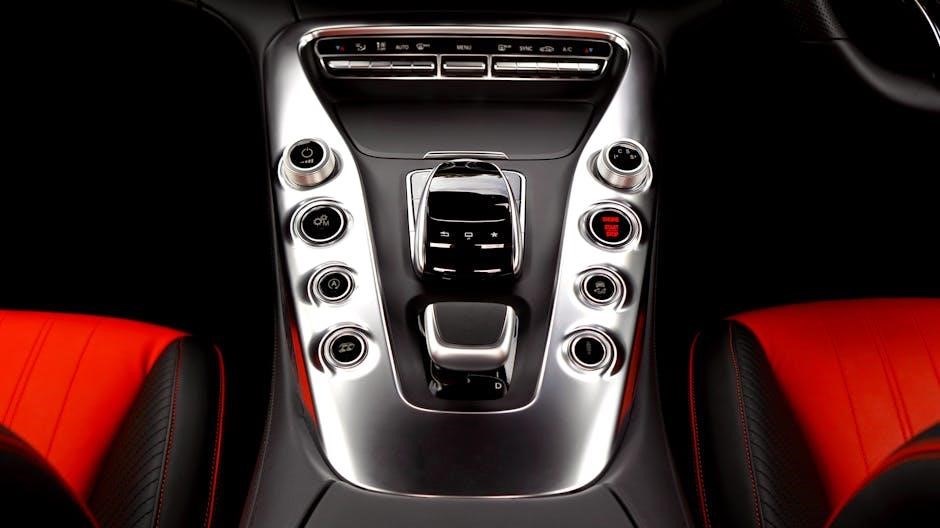
Practical Differences Between Driving Manual and Automatic Cars
Manual cars require clutch operation and gear shifting, offering control but needing practice․ Automatic cars shift gears automatically, simplifying driving but reducing driver involvement, making them easier for beginners;
3․1․ How Manual and Automatic Transmissions Work
A manual transmission requires the driver to manually change gears using the clutch pedal and gearshift․ The clutch disengages the engine from the transmission, allowing the driver to shift gears smoothly․ In contrast, automatic transmissions use a torque converter and planetary gears to automatically adjust speed and torque, eliminating the need for manual gear shifting․ This makes automatics easier to operate, especially in heavy traffic or for inexperienced drivers․ Both systems aim to optimize engine performance and vehicle speed, but they function through entirely different mechanisms, catering to different driving preferences and skill levels․
3․2․ Key Differences in Driving Techniques
Driving a manual car requires coordinating the clutch pedal, gearshift, and accelerator, which demands more skill and attention․ In contrast, automatic cars simplify the process by eliminating manual gear changes․ With an automatic, the driver focuses solely on steering and braking, making it more accessible for beginners․ However, manual driving provides greater control over speed and torque, especially on inclines or when overtaking․ Automatic cars are more forgiving in heavy traffic and urban driving, while manuals excel in dynamic or hilly terrain․ Understanding these differences helps drivers choose the right vehicle for their needs and skill level, ensuring safer and more efficient driving experiences․
3․3․ Ease of Use: Manual vs․ Automatic
Automatic cars are generally easier to drive, as they eliminate the need for manual gear shifting, making them ideal for beginners or those who prefer less complexity․ Manual cars require more skill and coordination, as drivers must operate the clutch and gearshift simultaneously․ Automatics simplify driving in heavy traffic and urban areas, reducing driver fatigue․ Manuals, however, often provide better fuel efficiency and more control over the vehicle, especially on hilly or winding roads․ The choice between the two ultimately depends on personal preference, driving habits, and the specific conditions in which the car will be used․ Both have their unique advantages;
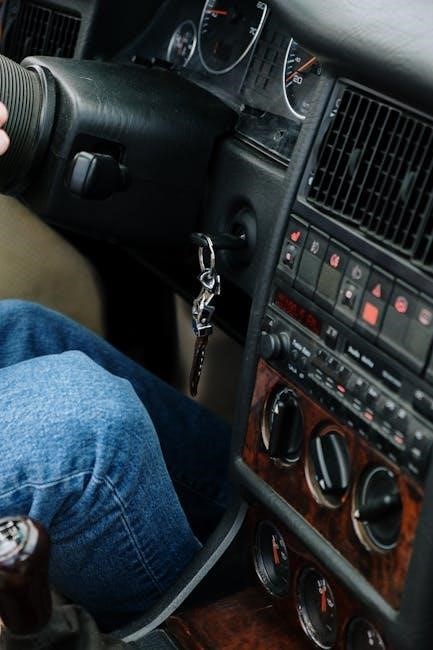
Learning to Drive an Automatic Car with a Manual Licence
With a manual licence, transitioning to an automatic car is straightforward․ Since no clutch or manual shifting is required, the process is simpler and less intimidating․
4․1․ Is a Manual Licence Enough to Drive an Automatic Car?
If you hold a manual licence, you are generally permitted to drive both manual and automatic cars․ This is because a manual licence indicates a higher level of driving proficiency, as it requires mastering the use of a clutch and gear shifting․ Automatic cars, on the other hand, simplify the driving process by eliminating the need for manual gear changes․ Therefore, transitioning from a manual to an automatic car is typically straightforward, with no additional training or licensing required․ However, it is always advisable to familiarize yourself with the specific features of an automatic car to ensure a smooth and confident driving experience․
4․2․ Benefits of Learning to Drive an Automatic Car
Learning to drive an automatic car offers several advantages, even for those with a manual licence․ Automatic cars simplify the driving experience by eliminating the need for manual gear shifting, reducing driver fatigue and stress, especially in heavy traffic or long journeys․ This makes driving more accessible and convenient, particularly for beginners or those who prefer a smoother experience․ Additionally, automatic cars are often preferred for rentals and certain vehicles, broadening your options when traveling or upgrading your vehicle․ Mastering both manual and automatic driving enhances your flexibility and skill, making you a more versatile driver overall․
4․3․ Tips for Transitioning from Manual to Automatic
Transitioning from a manual to an automatic car can be straightforward if done correctly․ Start by familiarizing yourself with the automatic gear selector and its modes (P, D, N, R)․ Practice in a safe, empty area to adjust to the lack of a clutch pedal․ Avoid the habit of pressing an imaginary clutch and focus on smooth acceleration․ Always use the parking brake to prevent rolling․ Additionally, avoid over-reliance on the car’s transmission; stay attentive and follow traffic rules․ Practice in various conditions, such as uphill driving or heavy traffic, to build confidence․ If unsure, consider professional instruction to refine your skills․

Benefits of Having a Manual Licence
Holding a manual licence offers flexibility, allowing drivers to operate both manual and automatic cars․ It enhances driving skills and can be cost-effective in car selection․
5․1․ Flexibility in Choosing Between Manual and Automatic Cars
A manual licence provides greater flexibility, allowing drivers to operate both manual and automatic cars․ This versatility is particularly advantageous when renting vehicles or purchasing a new car․ With a manual licence, drivers can seamlessly transition between vehicles without worrying about transmission type․ It also opens up more options in various driving scenarios, such as borrowing a friend’s car or navigating different terrains․ This flexibility makes a manual licence a practical choice for drivers who value adaptability and convenience․ It ensures they can drive any vehicle they encounter, whether at home or abroad․
5․2․ Cost-Effectiveness of Having a Manual Licence
Owning a manual licence can be more cost-effective than an automatic licence․ Manual cars are often cheaper to purchase and maintain, as they typically have simpler transmissions․ Insurance premiums for manual vehicles may also be lower in some regions․ Additionally, having a manual licence allows drivers to choose between manual and automatic cars, which can lead to cost savings when selecting a vehicle that fits their budget․ This flexibility ensures that drivers can opt for more affordable options without compromising on their ability to drive different types of cars․ Overall, a manual licence offers long-term financial benefits for drivers․
5․3․ Enhanced Driving Skills with a Manual Licence
A manual licence enhances driving skills by requiring active engagement with the vehicle․ Mastering the clutch and gear shifts improves coordination, situational awareness, and overall control․ Drivers with a manual licence often develop better adaptability and attentiveness on the road․ This proficiency can reduce the risk of accidents and improve responsiveness in challenging driving conditions․ Additionally, the ability to handle both manual and automatic cars broadens a driver’s capabilities, making them more versatile and confident behind the wheel․ These advanced skills also prepare drivers for a wider range of driving scenarios, whether at home or abroad, ensuring greater safety and competence․
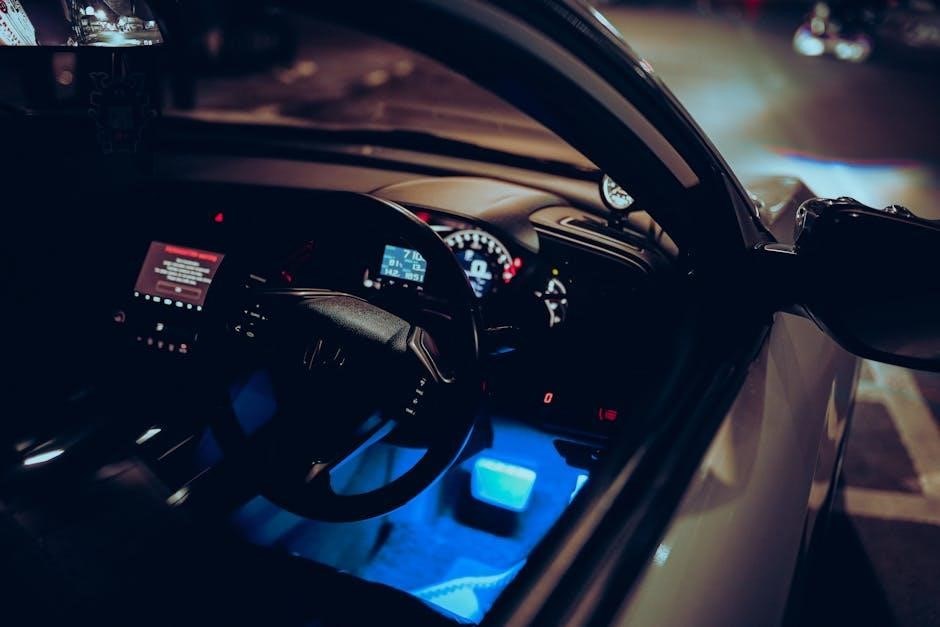
Switching from an Automatic Licence to a Manual Licence
Switching to a manual licence offers greater control and versatility in driving․ It requires learning gear shifting and clutch coordination, enhancing overall driving proficiency and flexibility․
6․1․ Why Switch from an Automatic to a Manual Licence?
Switching from an automatic to a manual licence offers several advantages․ Drivers gain greater control over their vehicle, especially in challenging conditions like steep hills or heavy traffic․ Manual transmissions are often more fuel-efficient and cost-effective in the long run․ Additionally, having a manual licence broadens your options when renting or purchasing cars, as you can drive both manual and automatic vehicles․ Many drivers also find that driving a manual car is more engaging and enjoyable․ Furthermore, acquiring a manual licence can enhance your driving skills and make you a more versatile driver overall․
6․2․ Process of Upgrading to a Manual Licence
Upgrading to a manual licence typically requires passing a driving test in a manual transmission car․ Most licensing authorities mandate this step to ensure proficiency․ Practice under a professional instructor is highly recommended to master clutch control and gear shifting․ Additionally, drivers must familiarize themselves with local driving laws and regulations․ Once the test is passed, the licence is updated to reflect the ability to drive both manual and automatic vehicles․ This process enhances driving skills and offers greater flexibility in choosing vehicles․ It’s important to start practicing in a safe, low-traffic environment before progressing to more challenging conditions․
6․3․ Challenges of Learning to Drive a Manual Car
Learning to drive a manual car can be challenging, especially for those accustomed to automatic vehicles․ Coordinating the clutch and accelerator requires practice to avoid stalling․ Shifting gears smoothly and understanding when to use each gear takes time to master․ Additionally, driving in hilly or heavy-traffic areas can complicate the process․ Consistent practice in a safe, low-traffic environment is essential to build confidence and skill․ Many learners find the physical effort of using the clutch and gearshift tiring at first․ However, perseverance pays off, as mastering a manual car often leads to better control and driving efficiency․ Patience and dedication are key to overcoming these challenges․
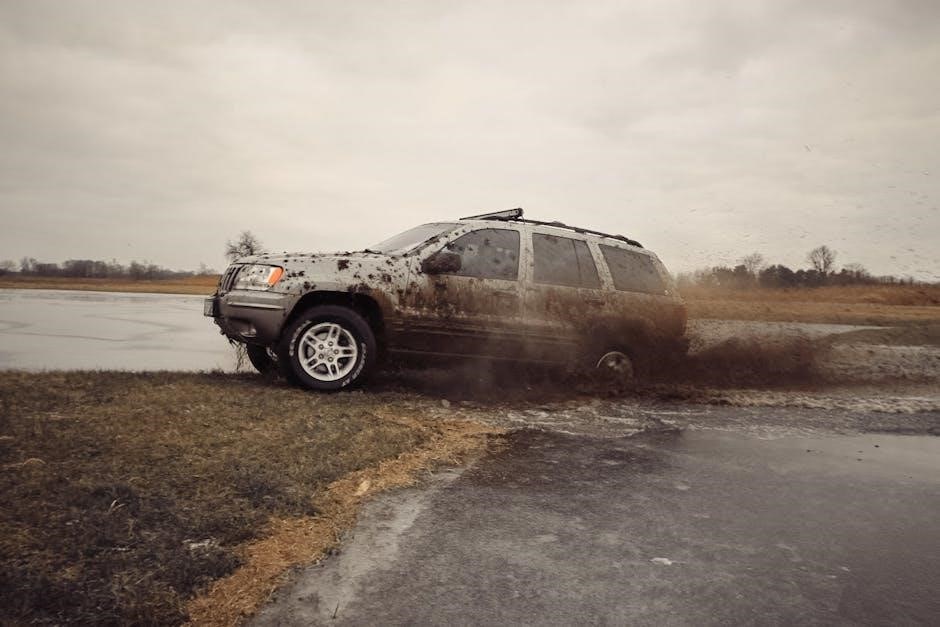
Driving an Automatic Car Abroad with a Manual Licence
Driving an automatic car abroad with a manual licence is generally permitted in most countries, but it’s crucial to verify local driving laws and requirements beforehand․
7․1․ International Driving Laws and Automatic Cars
International driving laws vary, but most countries allow drivers with a manual licence to operate an automatic car․ However, requirements can differ, and some nations may require an International Driving Permit (IDP) alongside your licence․ It’s essential to research the specific rules of the country you plan to visit․ While a manual licence typically covers automatic vehicles, rental companies may have their own restrictions․ Always check insurance and rental agreements to ensure compliance․ Additionally, some countries may have unique regulations regarding automatic transmissions, so verifying local laws beforehand is crucial for a smooth driving experience abroad․
7․2․ Country-Specific Rules for Driving Automatic Cars
Driving laws for automatic cars vary significantly across countries․ In some nations, a manual licence allows you to drive automatic cars, while others may require an automatic-specific licence․ For example, in Australia, the rules differ by state․ The ACT requires a manual test to drive manual cars, even if you have an automatic licence․ Meanwhile, the NT allows manual licence holders to drive both types․ Always research the destination country’s driving laws to ensure compliance․ Renting a car abroad may also require verification of your licence type․ Some countries enforce strict penalties for driving without the proper licence, so it’s crucial to stay informed․ Preparation is key to avoiding legal issues while driving internationally․
7․3․ Renting an Automatic Car Abroad with a Manual Licence
Renting an automatic car abroad with a manual licence is generally straightforward, as most countries allow manual licence holders to drive automatic vehicles․ However, it’s essential to confirm with the rental company beforehand, as policies may vary․ Some countries or agencies might require additional verification or documentation․ Always check the local driving laws and ensure your licence is valid for automatic cars in the destination country․ Additionally, review the rental agreement to confirm the vehicle type and ensure no restrictions apply․ Taking these steps will help avoid any issues during your rental experience abroad․
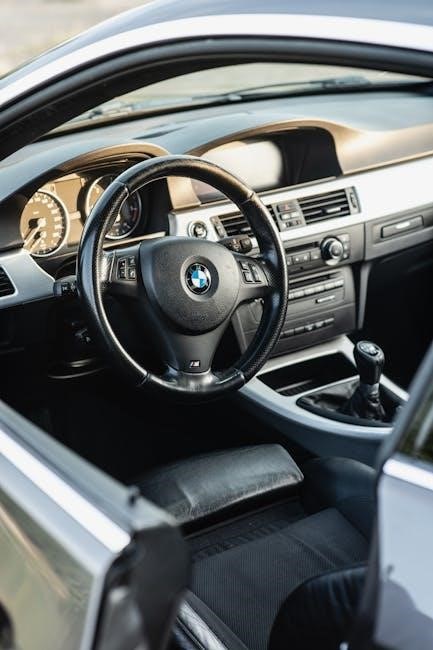
Towing an Automatic Car with a Manual Licence
Towing an automatic car with a manual licence is permissible, but ensure the vehicle is in neutral and the drive wheels are not in contact with the road․
8․1․ Rules for Towing an Automatic Car
When towing an automatic car, ensure it is placed in neutral gear to prevent transmission damage․ The drive wheels must not touch the ground to avoid mechanical stress․ Always use a tow bar or dolly to maintain control and safety․ Never tow an automatic car with the engine off, as this can cause internal damage․ Additionally, consult the vehicle’s manual for specific towing instructions, as some models may require additional precautions․ Proper towing practices are essential to protect both the car and the towing vehicle, ensuring a safe and legal operation․
8․2․ Legal and Safety Considerations for Towing
Legal and safety considerations are paramount when towing an automatic car․ Ensure the towing vehicle has the necessary capacity and equipment․ Always use proper lighting and signals to alert other drivers․ Check local laws regarding towing speeds and restrictions․ Never exceed the towing capacity of your vehicle․ Safety chains and secure connections are essential to prevent accidents․ Additionally, always be aware of the increased stopping distance when towing․ It’s important to follow all regulations to avoid legal penalties and ensure the safety of everyone on the road․ Proper preparation and adherence to guidelines can prevent potential hazards during the towing process․
8․3․ Best Practices for Towing an Automatic Vehicle
When towing an automatic car, always ensure the vehicle is in neutral to prevent transmission damage․ Use a tow bar or dolly to maintain proper weight distribution and avoid swaying․ Check the vehicle’s manual for specific towing instructions, as some models may require additional precautions․ Ensure all lights and signals are functional for visibility․ Maintain a safe distance from other vehicles and avoid sudden movements․ Drive at a moderate speed to control the towed vehicle effectively; Never tow without proper safety chains or connections, as this can lead to accidents․ Following these best practices ensures a safe and efficient towing experience for both vehicles involved․
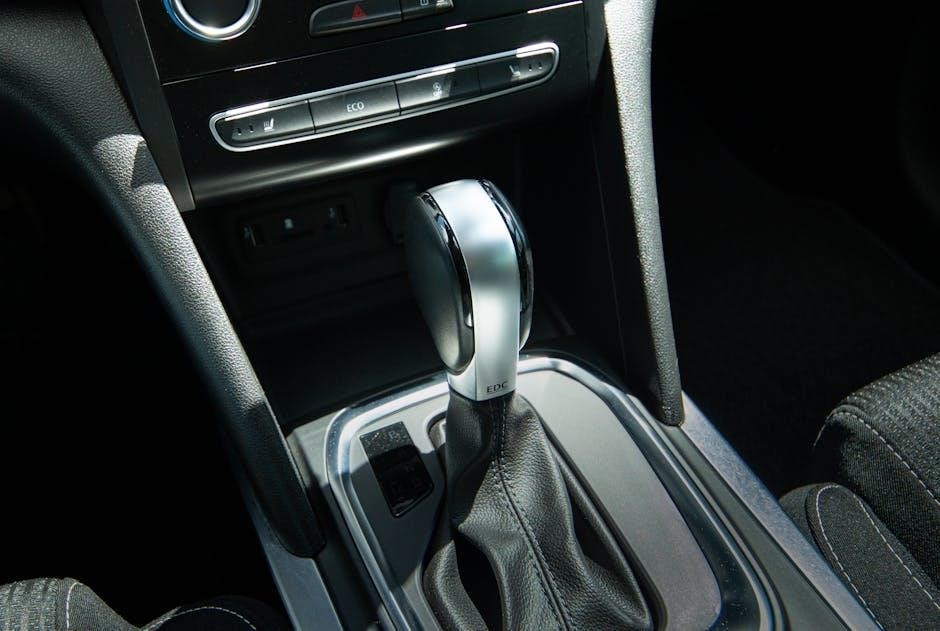
Common Mistakes to Avoid When Driving an Automatic Car
Common errors include forgetting to use the parking brake, improper use of the gear selector, and overrelying on the car’s transmission․ These mistakes can lead to accidents or damage․
9․1․ Forgetting to Use the Parking Brake
One common mistake when driving an automatic car is neglecting to engage the parking brake․ This oversight can lead to the vehicle rolling, especially on inclined surfaces, causing potential accidents or damage․ Many drivers assume the transmission’s “park” mode is sufficient, but relying solely on it can be risky, as it may not hold the car securely in all conditions․
Always develop the habit of using the parking brake, regardless of the terrain, to ensure your vehicle remains stationary when parked․ This simple step significantly enhances safety and prevents avoidable incidents․ Consistency in this practice is key to responsible driving habits․
9․2․ Incorrect Use of the Gear Selector
Improper use of the gear selector is a common mistake when driving an automatic car․ Many drivers inadvertently shift gears without fully understanding the functions of each mode, such as “P,” “D,” “N,” “R,” or “L” modes․ For instance, shifting to “Park” while the car is still moving can damage the transmission․ Similarly, neglecting to check the gear mode before accelerating can lead to unintended movement or loss of control․
To avoid this, always ensure the car is stationary before changing gears and familiarize yourself with the gear selector’s layout․ Proper use ensures smooth operation and prevents potential mechanical damage․
9․3․ Overreliance on the Car’s Transmission
Overreliance on an automatic car’s transmission is a common pitfall․ Many drivers assume the car will handle all gear shifts perfectly, but this can lead to poor driving habits․ For example, not using the brakes adequately when descending hills or failing to downshift manually in cars with tiptronic or paddle-shift options can result in increased wear on the brakes and transmission․ Additionally, relying solely on the transmission in heavy traffic or mountainous terrain can reduce control and efficiency․ To avoid this, stay attentive and use manual mode when necessary to maintain better control and ensure smoother driving experiences․
Driving an automatic car with a manual licence is generally permitted, offering flexibility and convenience․ Always understand local laws and practice responsible driving to ensure safety on the road․
10․1․ Final Thoughts on Driving an Automatic Car with a Manual Licence
Driving an automatic car with a manual licence is straightforward and legally permitted in most regions․ This flexibility offers convenience for drivers who prefer or need to switch between vehicles․ However, it’s essential to understand that an automatic licence restricts you to automatic cars only․ Always verify local driving laws and ensure your licence aligns with the vehicle you’re operating․ Practicing responsible driving habits and staying informed will enhance your safety and confidence on the road․ Remember, while the process is simple, adherence to legal and safety guidelines is paramount for a smooth driving experience․
- Ensure legal compliance with your licence type․
- Practice driving techniques for automatic cars․
- Stay informed about local driving regulations․
This approach ensures a seamless and lawful driving experience․
10․2․ Encouragement to Practice and Stay Informed
Consistent practice and staying informed are key to mastering the transition from manual to automatic driving․ Regular practice helps build confidence and ensures smooth operation of the vehicle․ Additionally, staying updated on driving laws and regulations, especially when driving abroad, is crucial for legal compliance․ Whether you’re a seasoned driver or new to automatics, continuous learning enhances your skills and safety on the road․ By dedicating time to practice and keeping yourself informed, you’ll become a more proficient and responsible driver, capable of handling various driving scenarios with ease and assurance․
10․3․ Importance of Adhering to Driving Laws and Regulations
Adhering to driving laws and regulations is essential for maintaining road safety and avoiding legal consequences․ Understanding the specific rules regarding automatic and manual licences ensures compliance with local and international driving standards․ Knowing whether your licence permits driving an automatic car is crucial to avoid penalties․ Additionally, familiarizing yourself with country-specific regulations, especially when driving abroad, helps prevent legal issues․ By following these guidelines, you contribute to a safer driving environment and protect yourself from potential legal repercussions․ Always verify the requirements in your jurisdiction to ensure you are driving legally and responsibly․



0 Comments